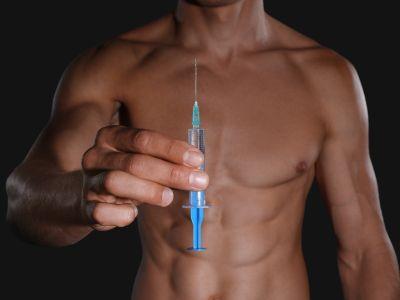Notifications

7 minutes, 2 seconds
-7 Views 0 Comments 0 Likes 0 Reviews

Testosterone is an important hormone that affects many aspects of men's health, including energy, mood, muscle strength, and sexual function. As men age or face certain health issues, their testosterone levels can drop, leading to symptoms that can have a real impact on daily life. These changes can be confusing and sometimes frustrating, but there are ways to address them.
One of the most common treatments is Testosterone Replacement Therapy, or TRT. In this article, we'll answer the most common questions about TRT, what it involves, who it can help, and what you can expect, especially if you're considering TRT in Kennewick.
Testosterone Replacement Therapy is a medical treatment that helps men with low testosterone levels. When the body does not produce enough testosterone, TRT can help bring those levels back to normal. The main goal of TRT is to restore testosterone levels and relieve symptoms like fatigue, low sex drive, mood swings, and loss of muscle mass.
TRT is not for everyone. It's usually recommended for men who have both:
Low testosterone levels confirmed by blood tests
Symptoms of testosterone deficiency include:
Low energy
Reduced sex drive
Mood changes or depression
Loss of muscle or bone strength
Common reasons for low testosterone include aging, chronic stress, injuries, and certain medical conditions. Sometimes, treating another health problem can help restore testosterone levels without TRT. That's why getting a full evaluation from a healthcare provider before starting therapy is important.
There are several ways to receive TRT, and the right choice depends on your lifestyle, preferences, and medical needs. Here's a closer look:
Injections: Many men find injections convenient because they are done every week or two. Some people learn to do these at home, while others prefer to visit a clinic.
Gels and Creams: These are easy to use and don't require needles. However, you need to be careful not to touch others' skin until the gel dries.
Patches: Patches are simple to use but can sometimes cause skin irritation.
Oral Tablets: These are easy to take but may have more side effects, so they are less commonly used.
Pellet Implants: Pellets provide a steady dose of testosterone for several months but require a minor procedure to insert.
Your doctor will help you decide which method is best for you.
TRT can provide several benefits for men with low testosterone, including:
More energy and less fatigue
Improved mood and reduced feelings of depression
Increased sex drive and better sexual function
Greater muscle strength and mass
Stronger bones and reduced risk of osteoporosis
Better focus and mental clarity
Some benefits, like improved mood and energy, may be noticed within a few weeks. Others, such as increased muscle mass and bone strength, may take several months. It is important to have realistic expectations and work closely with your healthcare provider.
Like any medical treatment, TRT can have side effects. Possible risks include:
Acne or oily skin
Increased red blood cell count, which can raise the risk of blood clots
Swelling or tenderness in the breast area
Worsening of sleep apnea
Smaller testicles and lower sperm count, which can affect fertility
Long-term safety is still being studied, especially regarding heart health and prostate problems. That's why regular monitoring with blood tests and checkups is so important.
The time it takes to see results from TRT varies from person to person. Some men notice improvements in energy and mood within a few weeks. Sexual function may improve within two months. Muscle and bone changes usually take longer, sometimes up to six months or more. Your starting testosterone level, age, and overall health can all affect how quickly you see results.
TRT is not right for everyone. It is not recommended for men with:
Prostate or breast cancer
Untreated sleep apnea
Severe heart problems
Normal testosterone levels
Before starting TRT, you'll need a thorough health check, including a physical exam and blood tests. This helps ensure the treatment is safe and appropriate for you.
If you start TRT, your doctor will monitor your testosterone levels, symptoms, and possible side effects. You'll likely have blood tests every few months. It's important to communicate openly with your healthcare provider so they can adjust your treatment as needed.
Testosterone Replacement Therapy can offer real benefits for men with low testosterone, helping to restore energy, mood, and overall quality of life. However, it's not a one-size-fits-all solution and should always be managed by a knowledgeable healthcare provider. If you're thinking about TRT in Kennewick, talk to a doctor who can answer your questions and guide you. Experts like Michael Turner, M.D., can help you make informed decisions about your health and well-being.

